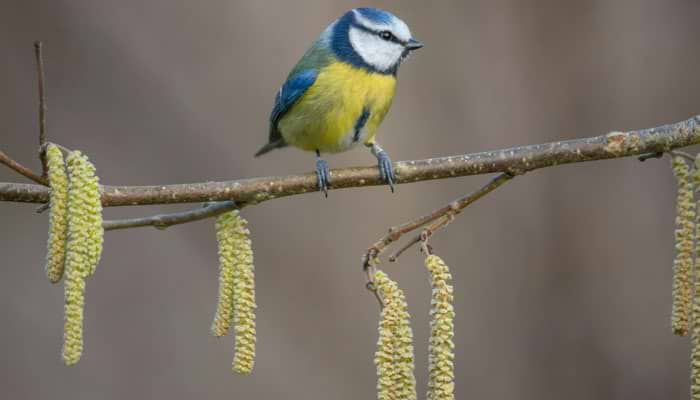
© Carl Mckie / Shutterstock.com
Brightening up the landscape with their tiny colourful blooms, catkins are a familiar sight in spring. Their long, slim clusters of delicate flowers grow on many of our British trees and play a vital role in reproduction. For a few weeks every year, mostly during March and April, catkins release pollen on breezy days. Easily recognisable, with a slim shape and a slightly spiky texture; they are commonly found on silver birch, hazel and white willow trees, although they can also be spotted on many other species too. Catkins usually have small petals, although some have none at all and are more of a pale green hue. Some start out green, before turning yellow, while others are covered in small flowers in various colours, depending on the species of tree. What are catkins for? The purpose of catkins is to allow trees to reproduce, as the female flowers are pollinated by the male flowers. Blowing into the wind, the catkins fall as their leaf canopies unfold. Although they are almost always wind-pollinated, sometimes insects can lend a helping hand too. While some are male and female, others are unisex, but the flowers are all arranged closely around the central stem, which usually droops as it hangs off the trees. The catkins' seeds can blow a long way in the wind and will then embed themselves in the soil to start a new tree. This is one of the wonders of nature, as the fact they are dispersed such a long way means new trees don't grow directly beneath the parent tree. One tree that pollinates through insects, rather than the wind blowing the catkins, is the willow. Most trees are reliant on the catkins blowing far and wide on the spring breezes. What time of year do catkins appear? Catkins start to appear on trees across Britain during the late winter months. However, you won't necessarily notice them, as they are often high up on the branches. This is why people tend to think of them as a spring bloom, as most don't start to flower until March, when we become aware of them and spot the different colours of the tiny flowers brightening up the landscape in rural areas, parks and gardens. When to see each type of catkin Although the dates can fluctuate, you can expect to see the various catkins flowering on the following dates: The hazel can start flowering as early as January if it's a mild winter, but it will be in full bloom throughout March. The alder flowers in late February and throughout March. Silver birch catkins start to flower in March and continue until May, while the oak and white willow are the last to flower, beginning in April and continuing throughout May. How beneficial are catkins to nature? Catkins are absolutely vital to nature, as they continue the planet's many species of trees. Without this means of pollination, the trees' reproductive cycle could not continue. Many types of wildlife respond to the emergence of catkins in spring. They provide a crucial early source of nectar and pollen for bees and other insects after the tough winter. Bees and other pollinators collect pollen from male catkins. Birds forage in them for insects such as caterpillars. Many species of bird will also eat the catkins as they hang from the branches. If you have catkin-bearing trees in your garden, they will provide a source of nesting materials for birds, so they are useful in multiple ways. How do catkins benefit the environment? Wildlife charity the Woodland Trust uses catkins to record the changing seasons for its Nature’s Calendar. The project tracks the effects of climate change and the weather on Britain's wildlife. The records date right back to 1736! The trust is inviting members of the public to keep a lookout for catkins on silver birch, hazel and oak trees, making a note of when they swell and release their pollen. This will be their first flowering date. It only takes a few moments to note what you see, and your recordings will add to centuries of data to help environmental studies. This helps the trust to keep track of how climate change affects the flowering of catkins and subsequently nature's reproductive cycle. Next time you go for a woodland walk or a stroll in an area where there are trees with catkins, make a note of what you see - so you can take part in one of the Woodland Trust's most important studies.




